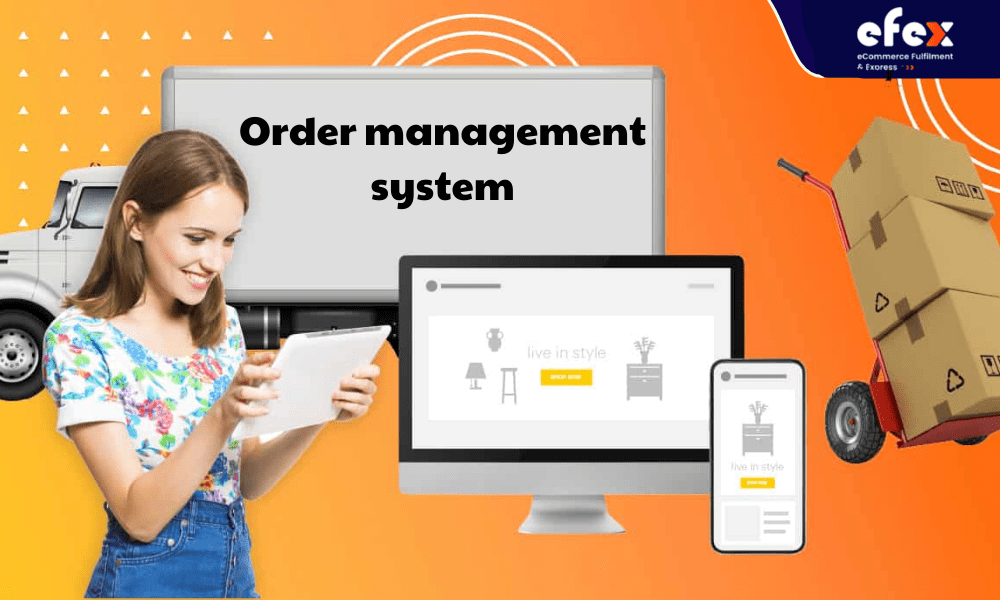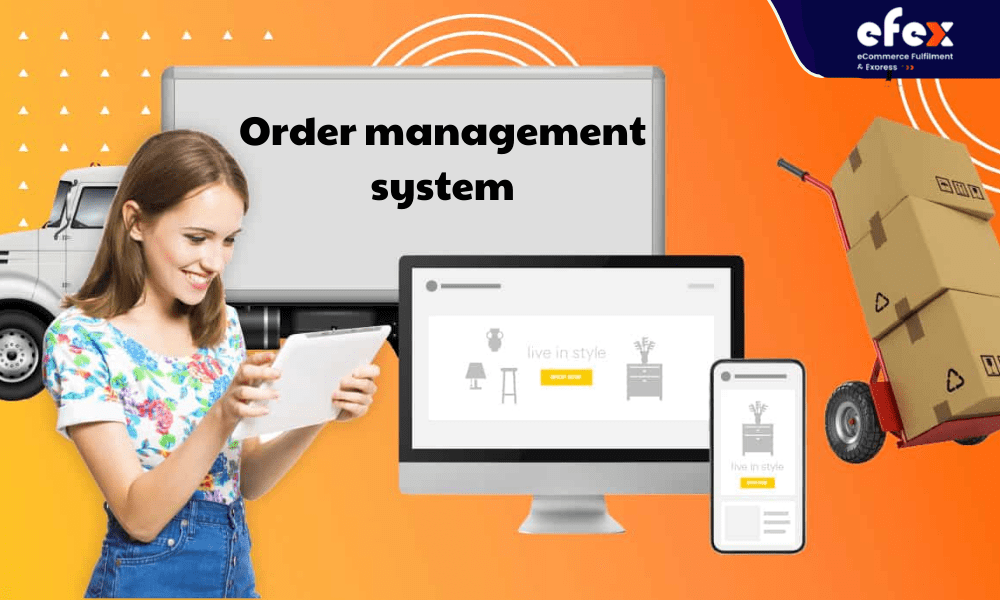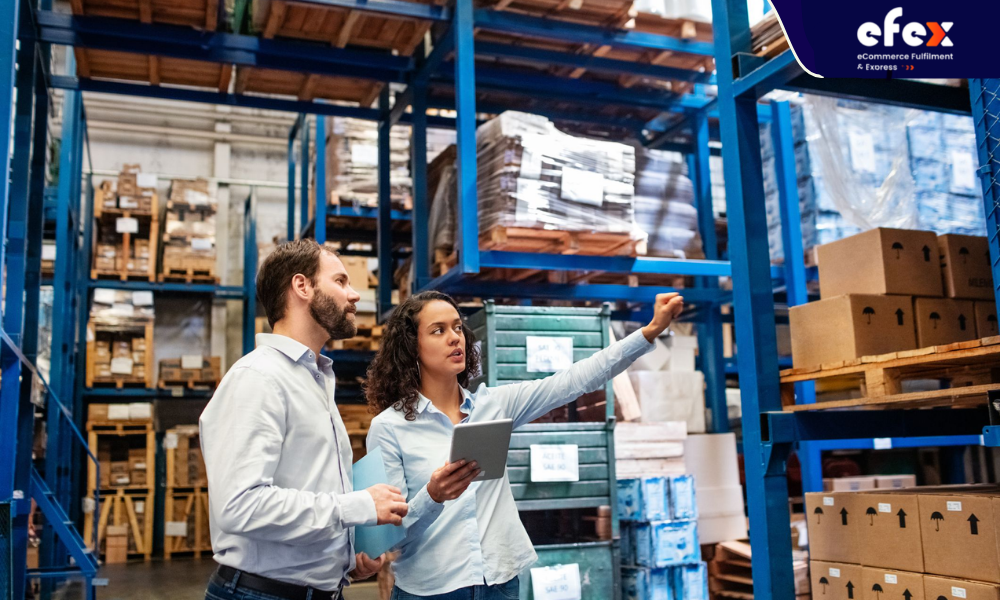
More Helpful Content
Capturing, tracking, and fulfilling orders across two or more sales channels is challenging for many businesses, especially high-growth retailers. An order management system (OMS) will help your company's sales process at every phase, from order creation through delivery and refunds. This article covers everything you need to know about order management system definition, its benefits, and how to choose the right order management system for you.

For merchants, receiving, monitoring, and fulfilling orders across two or more channels will be difficult to handle. Meanwhile, customers now demand more flexibility than in the past.
If you utilize multiple systems for each channel, handling these requests coming from various sources, such as a website, app, or in-store, may be a logistical nightmare. An order management system OMS, on the other hand, can combine these channels and give a single site for all orders. Additionally, online-only shops can benefit from a system that streamlines the process from order receipt to inventory management and timely delivery.

Through enterprise resource planning (ERP) platforms, advanced OMS systems interface seamlessly with other parts of your organization, such as supply chain and customer relationship management (CRM). These ERP technologies combine many modules from throughout your organization into one digital ecosystem, giving you a better understanding of everything from inventory levels to financial health and more.
Key Takeaways:
By automating several steps that used to need manual intervention, the efficiency of your order management process will be improved. An OMS can also boost the customer experience as well as cash flow and profitability by improving the company's capacity to process orders efficiently and rapidly.
Furthermore, OMS has become increasingly vital since eCommerce continues to grow at a rapid pace. This is due to the flexibility in order, picking up, receiving, and returning things helps you satisfy customers' expectations. Additionally, a distributed order management system is supported by an OMS.
👉 Read More: Order Management System For Ecommerce: Definition, Key Effect, Benefit
You can use OMS to fulfill an order that requires products to be shipped from several places, as well as handle returns through mail or in-store, all while keeping costs low. Another advantage of OMS is that it can scale as your business grows and develops extra sales channels.
An OMS must perform specific functions regardless of the size or type of your company. The difficulty of doing so depends on your company and the level at which you work. Here is what an OMS do you need to know:
Order tracking and monitoring is probably the most basic feature of any OMS. An OMS is mainly concerned with making life easy for both a brand and its customers to help you provide a more seamless customer experience, as well as inventory management, logistics, and other processes. Once a company sells through many channels, the order management systems will become even more critical. Orders from your website, marketplaces, and other platforms will be tracked and recorded by OMS.
In this way, centralizing and unifying sales can improve efficiency and production while also reducing mistakes. If you have such a presence, an OMS will also record and process orders done over the phone or in-store. Therefore, all order information is available in one location. Your team can check order statuses, make necessary modifications, and communicate with customers.
👉 Read More: Order Fulfillment Cost: All of the Fee You Need to Pay

Many other aspects of your firm are affected by how orders are placed and handled. For example, any order that is placed and fulfilled has an influence on your inventory. A variety of problems might develop if you don't have an accurate inventory count:
As of now, the OMS has kept track of the orders placed and the inventory you'll need to fulfill them. Many logistical operations will be improved with the appropriate order management systems including directing orders to the correct warehouse, creating shipping labels automatically, and so on.
Such improvements can have a significant impact on both warehouse management and overall productivity. Businesses that 3PL suppliers will benefit from having the proper OMS in place. Order fulfillment is faster and more straightforward once your OMS is integrated with a 3PL system. When you consider the benefits provided to customers, that's a win-win or a win-win-win.
Returns are an unavoidable part of the eCommerce business. Roughly 30% of items ordered online are returned. Order management requires handling returned products and interacting with the consumers who sent them back. Reverse logistics becomes a lot easier when you have the correct OMS. In this regard, you will be able to quickly create credit by cloning an original order. Refunds, replacements, and reorders will be easier to process as a result.
👉 Read More: Ecommerce Order Fulfillment Guide: Process And Strategy To Improve
Different companies have various requirements for an OMS. However, the more extensive your firm becomes, the more you'll require a more comprehensive OMS. The following are five of the most popular options to consider:
Manually tracking and handling orders is not recommended for any but the smallest businesses. But you can keep track of all order data in a ledger or using spreadsheets.

Typically, this will require creating a detailed spreadsheet in Excel or a similar tool. In this way, you'll be able to keep all of your order information in one place and up to date. Manual order management, on the other hand, is time-consuming. Just keeping a system up to date will take a large number of labor hours.
Furthermore, there is a substantial risk of human mistakes. If you enter an order improperly, problems can rapidly turn. There are two main points in opposition to a manual system.
The first is its difficulty to scale. Manual order management becomes more impossible as order quantities rise. It's difficult to manually align all when you add more sales channels. You'll need some technological assistance.
Secondly, a complex master spreadsheet is likewise difficult to use. It may be simple for its developer to make it up to date. However, if they quit the company, a new employee may find it difficult to keep up. That's hardly a formula for productivity or efficiency.
👉 Read More: Cross-Border Ecommerce: Definition, Example, and Market Size
It's obvious that everyone who sells online will surely need to use an eCommerce platform. This is the system that allows you to take orders from customers that come to your website. Smaller or newer companies often use their e-commerce platform to manage orders.
In certain cases, this can be effective because these platforms keep track of order details. There's usually a tool that allows you to follow order statuses and even adjust stock. However, relying only on an eCommerce platform is only a viable solution if the following conditions are met:
When it comes to ordering management, relying on your e-commerce platform is less practical if:
Many businesses choose standalone order management software if they need a more effective OMS. This software is integrated into the company's retail technology stack and works in tandem with other solutions. This includes their e-commerce platform, accounting systems, and other systems.
A standalone software covers all of the basic features of order management. allowing businesses to consolidate and track order data, as well as access information about customers and transactions. Some better options also have additional features such as Inventory and warehouse management.
However, one minus point of standalone software is its lack of integration. In reality, the software must function associated with a wide variety of different solutions. Aligning your order management with shipping, accounting, inventory demand forecasting, POS, and other systems can be difficult. Miscommunication, data silos, scalability challenges, and other undesirable outcomes are possible outcomes.
Let's look at the benefits of utilizing an OMS for your order fulfillment process!
Order fulfillment without an OMS is risky. Manually processing orders with spreadsheets exposes you to human mistakes. A human mistake from manual process management is the main cause of inventory and fulfillment challenges for many businesses. This not only affects consumer experiences, especially if the wrong item is delivered to the wrong customer, but it also causes logistical difficulties.
The number of returns you'll have to handle skyrockets, as does the amount of money you'll have to spend rectifying orders that are wrong. A similar concept applies to cross-platform manual data entry. Some eCommerce businesses nevertheless spend time manually creating and issuing purchase orders. Using an OMS to streamline their production will eliminate the need for back-and-forth communication between your brand and a vendor if a manually made purchase order is erroneous.

While shipping costs are still important to modern customers, the time it takes for a product to move from purchase to delivery is crucial. When shopping online, around 43% of customers expect next-day delivery, which brands must achieve in order to secure the possibility for repeat business. Indeed, once fulfilling orders is mentioned, time is of the essence. The time it takes to process orders and allocate them to a facility determines how long it takes for them to arrive.
That's why an OMS works more effectively in this case. By checking inventory across different warehouses, an OMS simplifies the picking and packaging process. It locates the closest fulfillment facility with available inventory to the customer. It transmits order information to that location immediately so that the goods may be chosen, packaged, and dispatched as quickly as possible.
Shipping is obviously a touchy matter for today's customers. Customers value more than simply the timing of your purchase fulfillment process. Customers demand to know the status of their purchase, including its current location and expected delivery date, in 97% of all cases. Retailers can use an OMS to assist them to satisfy such expectations.
When customers seek an update on their order or return, most platforms offer built-in tracking sites. This type of transparency keeps customers from posting bad reviews all over the website.
54% of shops do not have access to forecasting tools. Another 18% have an excessive amount of money in inventories. Lack of visibility into inventory levels frequently leads to two major issues, which can cost companies up to 12% of annual sales:
Retailers may tackle these issues by using an OMS with inventory control. Retailers will have access to comprehensive data on peak and low-selling seasons, popular items, and consumer behaviors. This dataset may be used to determine how much stock certain warehouses will require, ensuring that they are not overstocked.
The worldwide eCommerce market is expected to be valued at $4.5 trillion. Customers from all around the world can shop at eCommerce stores. Their only limit prior to an OMS was the processes required to accept and fulfill overseas orders. Order management software supports eCommerce companies in expanding their global reach. Retailers may do the following with one:
From the moment a customer puts an order until delivery and even after-sales care, the OMS system will assist you in managing the order lifecycle. Choosing the ideal OMS for your company, on the other hand, might be a difficult task. There is no such thing as a one-size-fits-all answer. Because every business is different, it will require a somewhat different from an OMS. However, there are certain basic criteria to examine for all e-commerce businesses.
When evaluating OMS options, whether your company is big or little, there are a few things to keep in mind. Before deciding on a system to manage your company's orders, keep the following six aspects in consideration:
You'll need your OMS to integrate with other elements of your organization, regardless of whatever model you choose.
Accounting and inventory management technologies must be used in connection with standalone OMS software. Even the most comprehensive digital operations platform must integrate to some extent, for example, your website and third-party sales or marketing platforms.
One factor to evaluate is whether the integration was developed directly or indirectly and if it was constructed and managed in-house or outsourced. This has a significant impact on the integration's dependability and efficiency. Consider different apps and services with which it must integrate before deciding on the best solution for you. Separate sales channels, marketing tools, and other items may be included.
The best OMS for your brand is one that doesn't need you to overhaul your whole structure in order to use it.
Retailers, both online and off, are a part of larger supply chains. You'll purchase stock or raw materials from different vendors. Then, you can transmit parts or all of it to distributors or third-party logistics providers who are in charge of delivering to customers. In selecting an OMS, keep in mind how the system will affect your supply chain.
Does implementing a certain solution make it more difficult to handle orders from some suppliers? Using one OMS alternative prevents you from using a preferred 3PL provider? If the answers to these questions are yes, you'd better consider switching to another system.

OMS also helps you analyze wider patterns and trends as well as keep track of current orders. The ability to accurately foresee and plan for the future is facilitated by this understanding. Examine the reporting capabilities of an OMS before making a decision with the following information to consider
Accurate and detailed data from your OMS will benefit you in a variety of ways.
You're missing out if your system doesn't allow for this level of reporting.
An OMS can have an influence on customer experience even if it is not supposed to be consumer-facing. We've already explored how the correct system may ensure that the impact is beneficial. Meanwhile, an ineffective system may have undesirable consequences.
Consider an OMS that is only built to handle one sales channel or currency. Adopting the solution would harm your business if you sell across many platforms or have clients from other countries. Make sure that whatever OMS you select covers all of the basics for your company.
No business wants to remain stagnant; they all want to grow and expand, and many of them have big goals for the future. When selecting an OMS or any other technology, one of the most important factors to evaluate is whether it can scale with the company.
Take a look at where you want your company to be in 5 to 10 years.
Will you be selling on a variety of different platforms?
Will your order volume increase?
Then consider if this OMS is capable of handling such changes to your operation. If you answered yes, you've hit pay dirt.
While selecting a solution, you must also consider the service provided, of course when you choose an OMS
If you answered no to either question, you might want to consider another alternative. You should also consider how much help a vendor will provide in the long run. It's important to have 24/7 support if something goes wrong with your OMS to assist streamline processes and teach best practices for your system.
After you've considered everything above, you're willing to find an OMS. Here are some tips for you to choose the OMS.

Discuss the implementation of a new OMS with all partners. This will include the following:
Find out what your objective is for upgrading your system from them. This will assist you in identifying which functions are required to achieve your objectives and which you can do without.
To write a complete proposal, apply everything you learned in step one. It must specify exactly what you want from a new OMS. Consider factors like order numbers, sales channels, and future goals by making such a document to organize your plan and also. show suppliers what you want them to do.
Take a look at the current market for OMS. What vendors are available who might be able to help you? Make a shortlist, and then contact the best ones. Send them your proposal and invite them to discuss it.
After you've received responses from several suppliers, you may compare their services. Consider your company's requirements and the functions you determined to be necessary. Keeping that in mind should assist you in selecting the finest OMS solution.
Any reputable OMS provider will want your installation to be a success. They will frequently offer advice and support during the process. After all, it's in their best interests for you to get the most out of their program. The more closely you collaborate with a provider from the beginning, the more likely this is.
👉 Read More: All Cost To Rent A Warehouse In 2024
You must accept orders from multiple sources to stay competitive and develop your business. That’s why you need an OMS. An order management system is a critical tool for managing inventories, accepting orders from multiple channels, fulfilling orders, and processing refunds. The full detail about OMS including definition, process, and the way to choose the right OMS for you will surely come in handy for your business.


